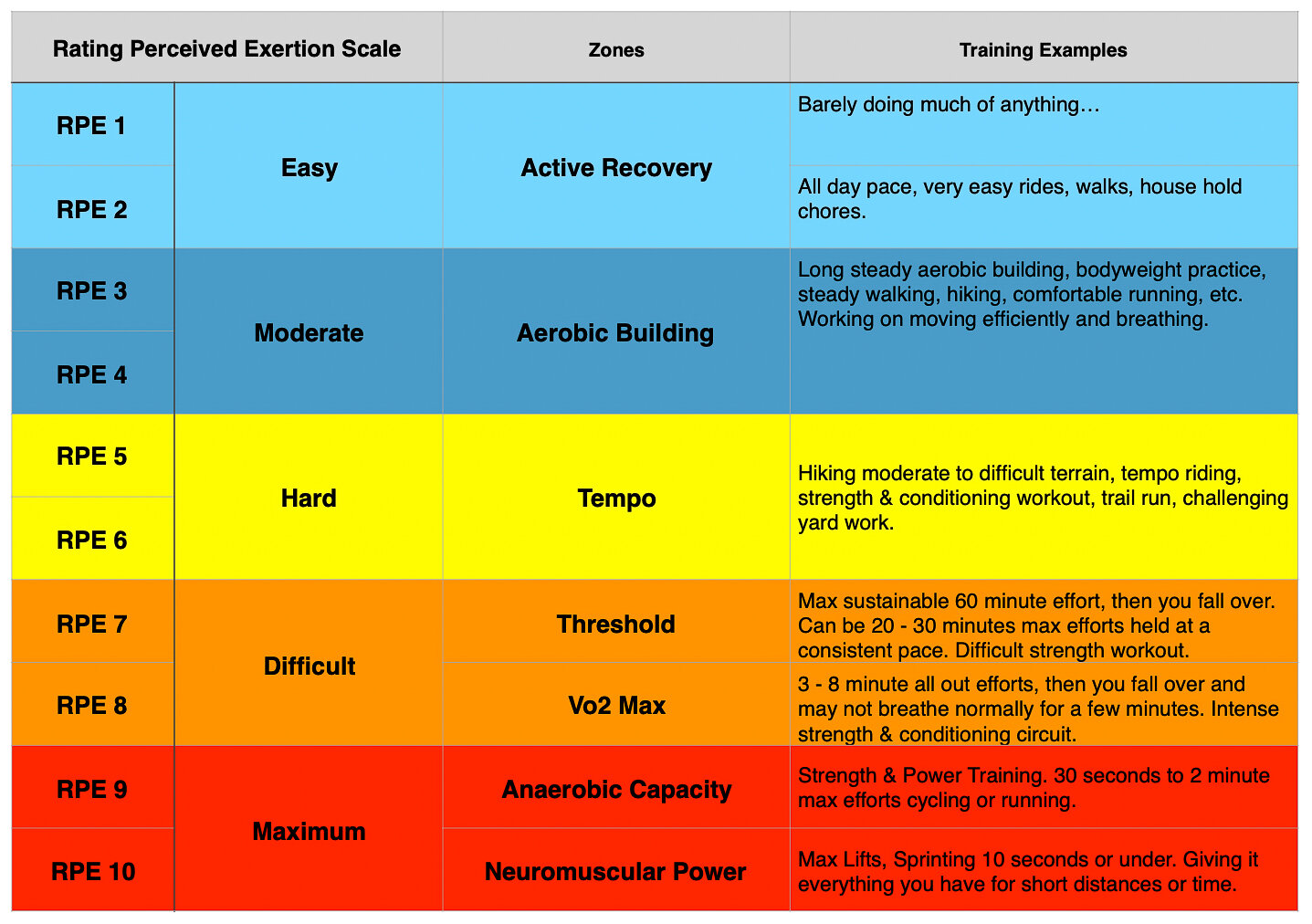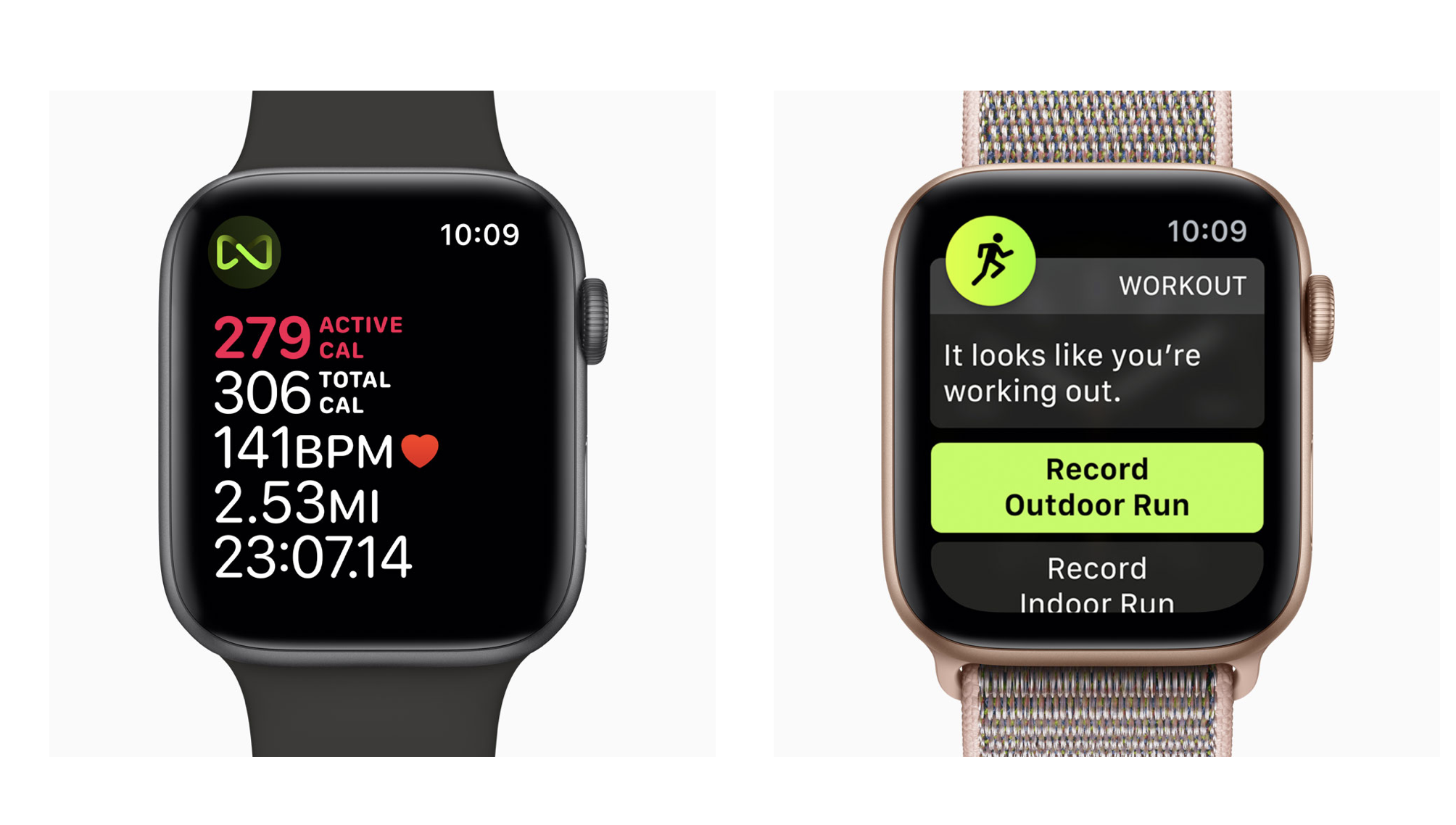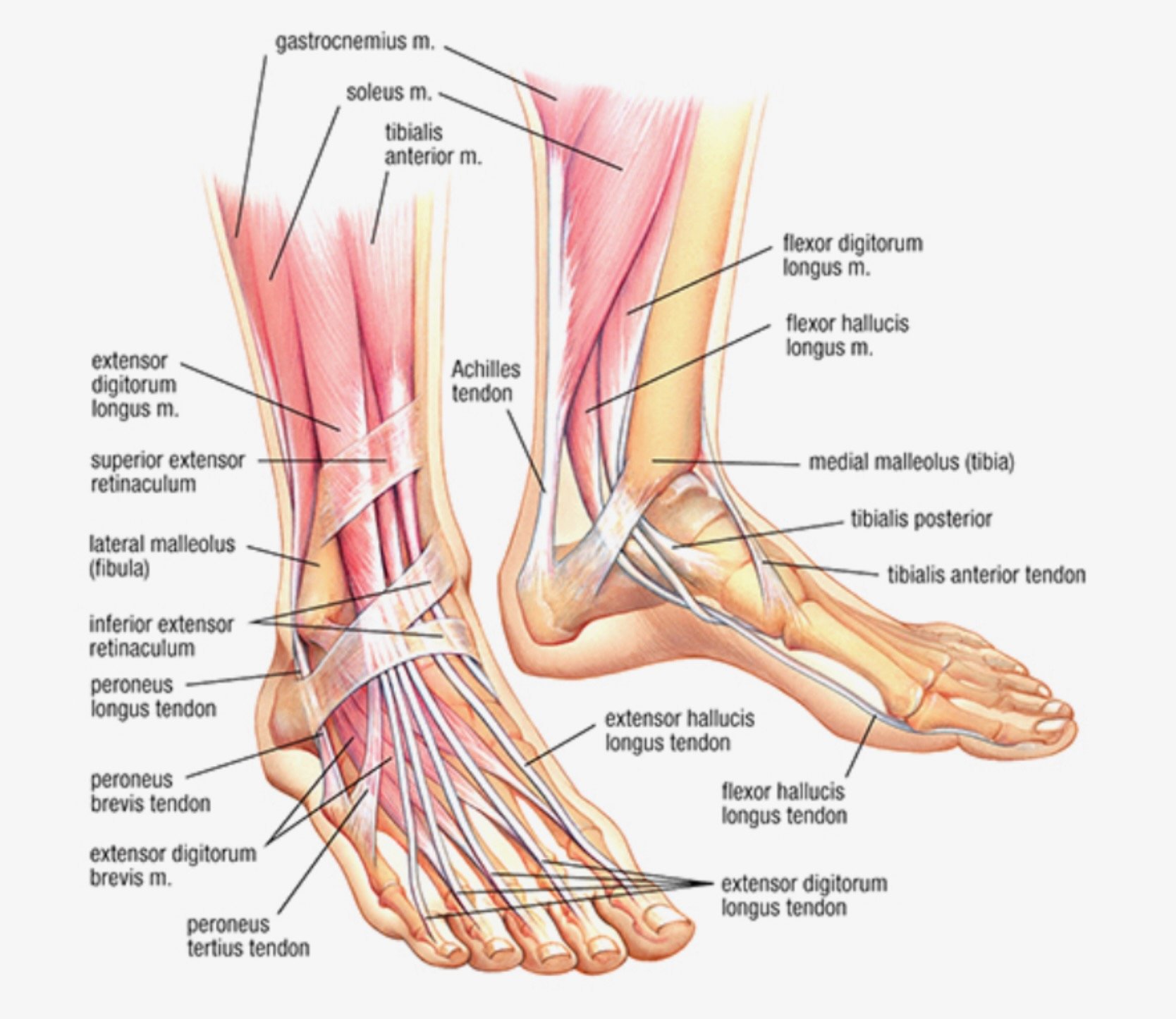RPE & Issues with Solely Relying on Heart Rate
To take full advantage of your training and to maximize your performance, it is essential to become familiar with Rating Perceived Exertion. Whether you are coached or a self coached athlete that's using a heart rate monitor, power meter or just keeping a keen eye on pace and effort, gaining experience and familiarity with your Perceived Exertion / Effort is an invaluable tool.
Rating Perceived Exertion (RPE) is the oldest and still one of the best indicators of intensity and effort given. It is simply a subjective measure or personal feeling to the current effort, intensity and fatigue one is feeling. It is a number that you place beside a particular effort, working set, segment or overall workout. Common ranges to use are 1 - 10 and 6 - 20 (Borg Rating). The scale 1 - 10 is the simplest of measures and is what we use (see chart below).
Using Heart Rate (HR) solely is not the most accurate way for gaging effort, intensity, how you are performing in a workout or determining one’s fitness level. For example, you can be feeling pretty strong but find it hard to get your HR up to the prescribed ranges for your intervals. This can either mean that you're not recovered enough for that particular workout or it can be a sign of improved fitness, however, you may take it as a sign that you're just not up to the workout and shut things down. It will be difficult to know unless other measures are taken into consideration, such as RPE, pace or the use of a power meter.
As you adapt physically to the stresses of training, your aerobic engine improves, you gain an increased stroke volume (more blood & oxygen pumped per heart beat), which equals a reduced overall HR both resting or with any effort put forth. This is why depending solely on what your HR monitor says can cause confusion as to the levels of stress one is currently undertaking. However, when used together with RPE, pace or wattage from a power meter, you can more accurately reach your desired intensity levels and know whether your fitness is improving or adjustments need to be made in your training.
Cyclist have the benefit of using a power-meter to effectively determine where their current fitness is and how they are performing. This is a very precise indicator of the work being done and the current state of an athletes fitness.
“Simply put, the power meter allows you to quantitatively track your fitness changes, more easily define your weaknesses, and then refocus your training based on the those weaknesses” - Allen & Coggan 2010.
Heart rate is also slow to respond while doing intervals. Say you have to complete 4x1 minute zone 6 efforts, your HR may need to be around 170+ and some athletes believe that the interval doesn’t begin until their HR reaches that, which because of the lag in HR it could take a minute or 2 just to get there, if it does at all. Now when using a powermeter, your wattage would need to be around 400 watts if your FTP (Functional Threshold Power) is 275 watts. As soon as you start the interval, you can immediately reach 400 watts. This allows for much more accurate and efficient training. The same goes with RPE once you gain the experience. Although there is a lag with RPE as there is with HR, it is much smaller and can be taken into account much easier with a bit of practice and focus.
Overall, rating perceived exertion is the simplest and cheapest measure of intensity. Your workouts will be more guided and the numbers you see on your training device will have more meaning. It will take a fair amount of practice to better place a number next to your effort, fortunately…you can practice just about every day.
Be sure that during and after each training session, you place a number for each effort or moment within your workout. You can also establish an RPE for the overall workout but do so immediately after the workout because each minute or hour that goes by, that hard effort you just put in can easily be down graded to "that wasn't so bad". Lastly, If your GPS or HR device were ever to fail, or your powermeter dies during a race or training session, you can now continue without hesitation by confidently moving forward using RPE.
















